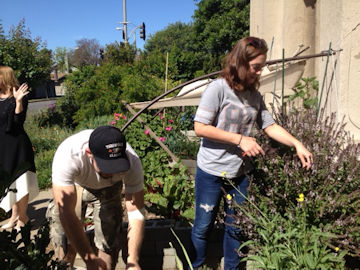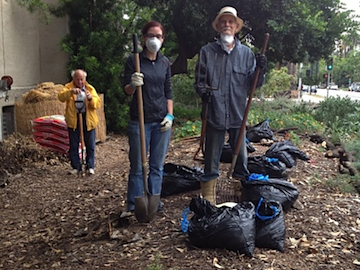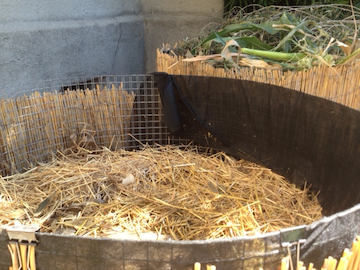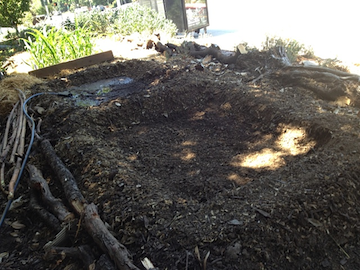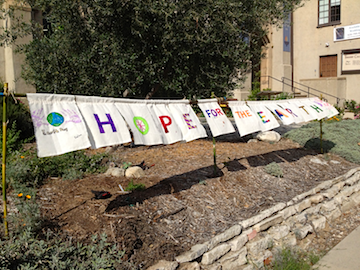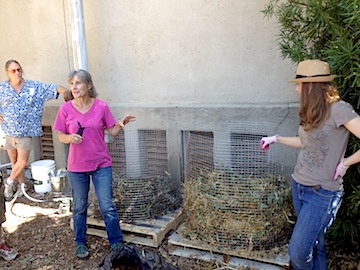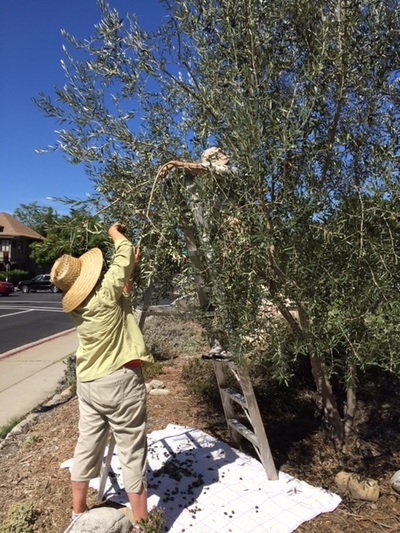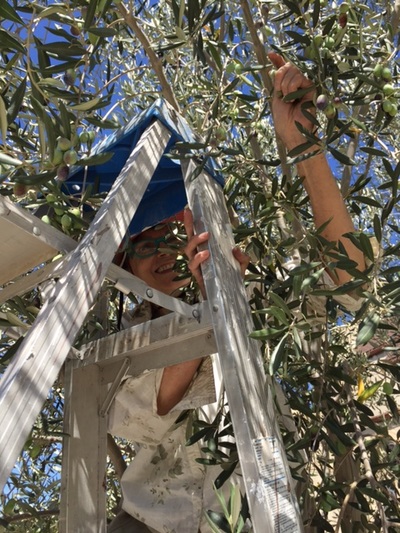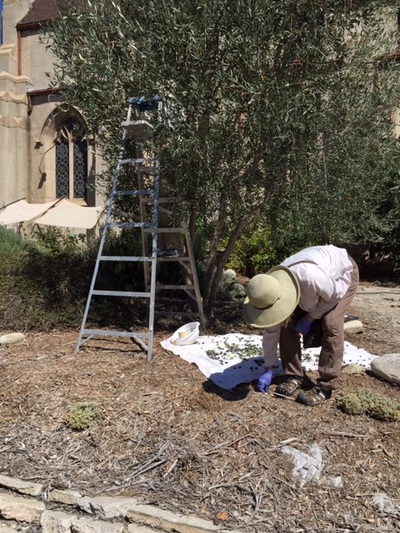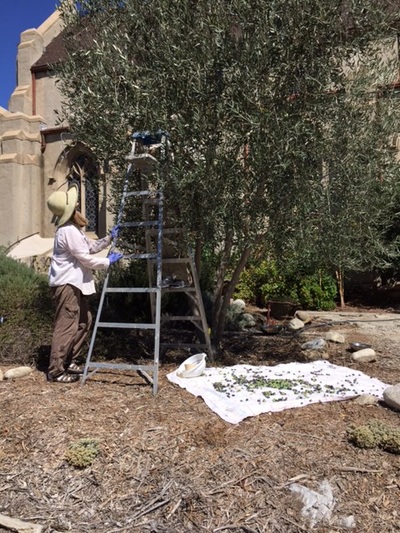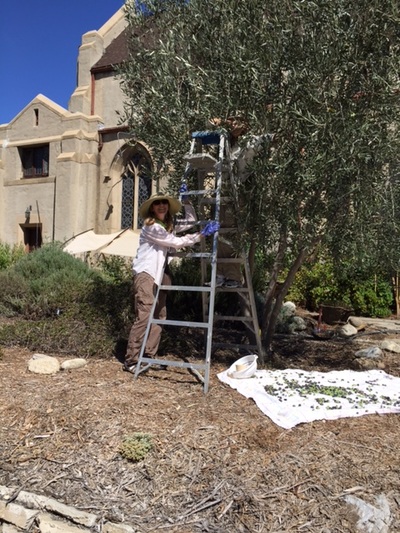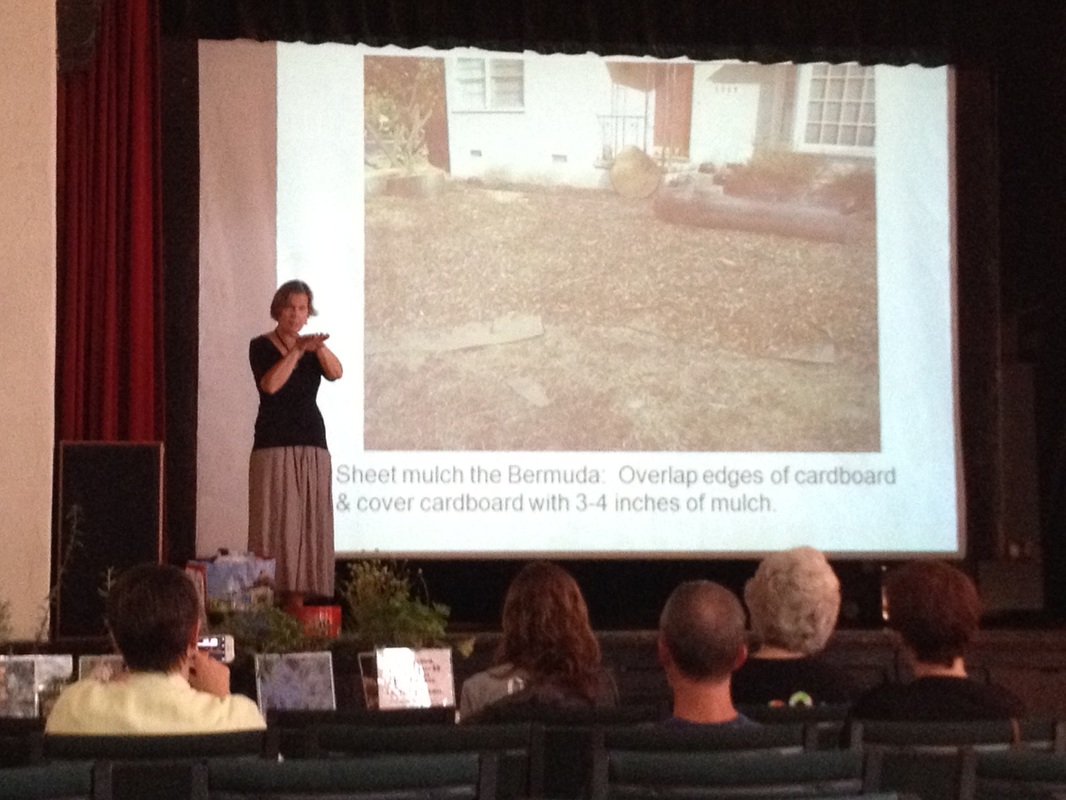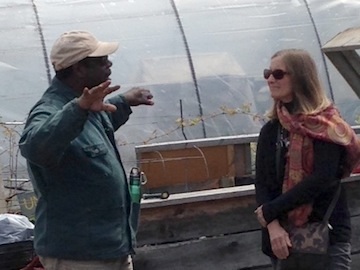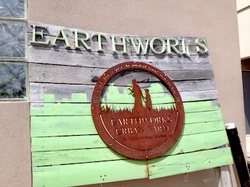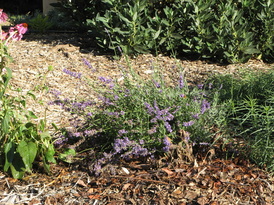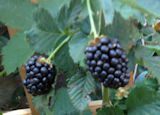
thanks to an abundance of winter rain. Our orchard also responded to the rains
by producing an abundance of fruit. Our apricots, blackberries, and blueberries
have all been harvested and enjoyed. Plum, apples, persimmons, pomegranates,
and figs are still to come.
We have several upcoming projects of interest:
- Join us for a hands-on workshop that will build a cold stack compost.
Date: Saturday June 10 from 10am-noon
Transition Pasadena & Throop Learning Garden host a Compost Workshop, featuring garden guru George Patton.
Donation: $10
Space is limited so RSVP to [email protected] - We are refurbishing the raised bed gardens. We will replace the cement blocks, which hold heat, with redwood planks. Stay tuned for construction workshop date.
- We are revamping our shade structure over the raised bed veggie garden. This will allow us to continue growing more heat sensitive plants, like cucumbers, into the heat of summer.
- Plus, we continue to plant our summer crops in the hugel garden. So far we have planted okra, squashes, and flowers. Still to come: Tomatoes, corn, & beans.
— January Nordman


